
Bosanska Krajina is a geographical region, a subregion of Bosnia, in western Bosnia and Herzegovina. It is enclosed by a number of rivers, namely the Sava (north), Glina (northwest), Vrbanja and Vrbas. The region is also a historic, economic, and cultural entity of Bosnia and Herzegovina, noted for its preserved nature and wildlife diversity.
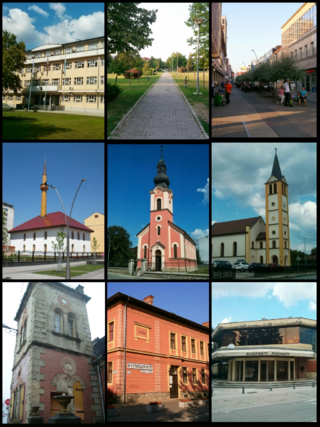
Prijedor is a city in the entity of Republika Srpska, Bosnia and Herzegovina. As of 2013, it had a population of 89,397 inhabitants within its administrative limits. Prijedor is situated in the northwestern part of the Bosanska Krajina geographical region.

Kozara is a mountain in western Bosnia and Herzegovina, in the town of Kozarac and in the Bosanska Krajina region, bounded by the Sava River to the north, the Vrbas to the east, the Sana to the south, and the Una to the west. Its tallest peak is Lisina. In 1942 Kozara was the site of the Kozara Offensive, part of the Yugoslav National Liberation War and Partisan resistance during World War II.
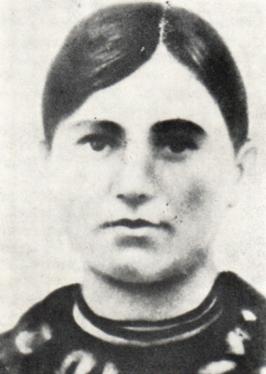
Marija Bursać was a member of the Yugoslav Partisans during World War II in Yugoslavia and the first woman proclaimed a People's Hero of Yugoslavia. Bursać was born to a Bosnian Serb farming family in the village of Kamenica, near Drvar. After the invasion of Yugoslavia by the Axis powers and their creation of the Independent State of Croatia in April 1941, Bursać supported the Partisan resistance movement led by the Communist Party of Yugoslavia (KPJ). Like other women in her village, she collected food, clothing, and other supplies for the Partisan war effort. Bursać became a member of the League of Communist Youth of Yugoslavia in September 1941. The following August she was appointed political commissar of a company of the 1st Krajina Agricultural Shock Brigade, which harvested crops in the Sanica River valley, and was admitted to the KPJ at the end of that summer.
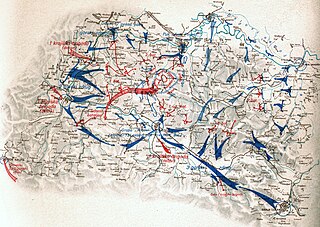
The Kozara Offensive, also known as Operation West Bosnia was a large-scale German-led counter-insurgency operation against the Yugoslav Partisans in the Bosnian mountain region of Kozara in the Independent State of Croatia during World War II. It was launched on 10 June 1942, with the goal to encircle and destroy the Partisans who were operating in the Kozara mountain region near Banja Luka, which threatened German access to the Belgrade-Zagreb railway.
Sisak concentration camp was a concentration and transit camp located in the town of the same name during World War II. The camp operated between 1941 and 1945 under the administration of the Independent State of Croatia (NDH), a puppet state of the Axis powers.
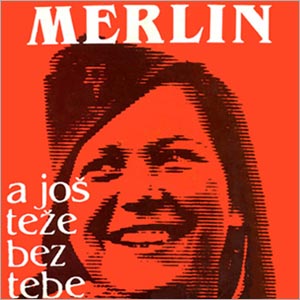
Teško meni sa tobom is the second studio album released by the former Yugoslavia's Merlin band. The album was released in 1986.

Mladen Stojanović was a Bosnian Serb and Yugoslav physician who led a detachment of Partisans on and around Mount Kozara in northwestern Bosnia during World War II in Yugoslavia. He was posthumously bestowed the Order of the People's Hero.
The Jastrebarsko children's camp held Serb children who had been brought there from various areas of the Axis puppet state, the Independent State of Croatia, during World War II. The children had been captured as a result of massacres and counter-insurgency operations conducted by the genocidal Ustaše-led government, its Axis allies and other collaborators since the Axis invasion of Yugoslavia and establishment of the NDH in April 1941. The camp was located in the town of Jastrebarsko, about 37 kilometres (23 mi) southwest of the NDH capital, Zagreb, and operated from 12 July until October 1942. Camp administration was provided by nuns of the Daughters of Charity of Saint Vincent de Paul order, with Ustaše guards.
Misimović is a Serbian surname. It is traditionally found in Bosnia and Herzegovina, from where the family members have spread into Croatia and Serbia. There were only 3 people with the surname in Croatia in the 1950s, today there are 31, concentrated in Rijeka. Petar Misimović from Podgradci, a Partisan, fell at the Battle of Kozara. At least 46 individuals with the surname, all of whom were ethnic Serbs, from the villages of Jablanica and Sovjak in Gradiška, were murdered by the Ustaše at the Jasenovac concentration camp. At least six of these were children, murdered in 1942. It may refer to:

Đurađ "Đuro" Pucar "Stari" was a Yugoslav and Bosnian Serb politician.
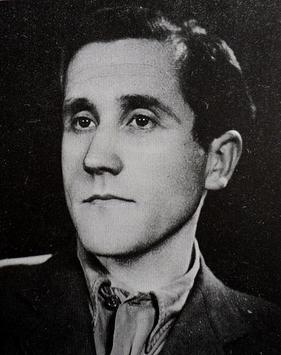
Osman Karabegović was a Yugoslav and Bosnian communist politician and a recipient of the Order of the People's Hero. He joined the Communist Party of Yugoslavia in 1932.
The Srb uprising was a rebellion against the Independent State of Croatia that began on 27 July 1941 in Srb, a village in the region of Lika. The uprising was started by the local population as a response to persecutions of Serbs by the Ustaše and was led by Chetniks and Yugoslav Partisans. It soon spread across Lika and Bosanska Krajina. During the uprising numerous war crimes were committed against local Croat and Muslim population, especially in the area of Kulen Vakuf. As NDH forces lacked the strength to suppress the uprising, the Italian Army, which was not a target of the rebels, expanded its zone of influence to Lika and parts of Bosanska Krajina.

Mother Serbia, Serb Mother or Mother of All Serbs, is a female national personification of Serbia, the nation-state of Serbs.

Uroš Drenović was a Bosnian Serb military commander in the central Bosnia region of the fascist puppet state known as the Independent State of Croatia (NDH), led by the Ustaše, during World War II. After distinguishing himself in resisting the Ustaše alongside communist-led rebels, Drenović betrayed the communist-led Partisans and began to collaborate with the Ustaše, Italians and Germans against them.

Vahida Maglajlić was a Yugoslav Partisan recognized as a People's Hero of Yugoslavia for her part in the struggle against the Axis powers during World War II. She was the only Bosnian Muslim woman to receive the order.
Mile Mećava was a Yugoslav Partisan and a hero from World War II.

The Drvar uprising was the World War II uprising of the Serb population of Bosnian Krajina. Italy supported it, both politically and in arms, in its struggle against the fascist puppet state of the Independent State of Croatia between 27 July and 26 September 1941.

Slavko Rodić, was a Yugoslav partisan, general of Yugoslav People's Army and People's Hero of Yugoslavia.

The Bihać operation was a military operation conducted by Yugoslav partisans against the Independent State of Croatia (NDH) and Nazi Germany during World War II. The aim of the operation was to capture Bihać and the surrounding towns to connect Partisan held areas in Bosanska Krajina, and Knisnka Krajina. The battle for the city of Bihać lasted from 2 November to 4 November 1942. After capturing the city, the partisans continued to fight in surrounding areas until 15 November. The operation resulted in a major Partisan victory, with Bihać and the surrounding areas being captured, and the NDH suffering significant casualties.
















